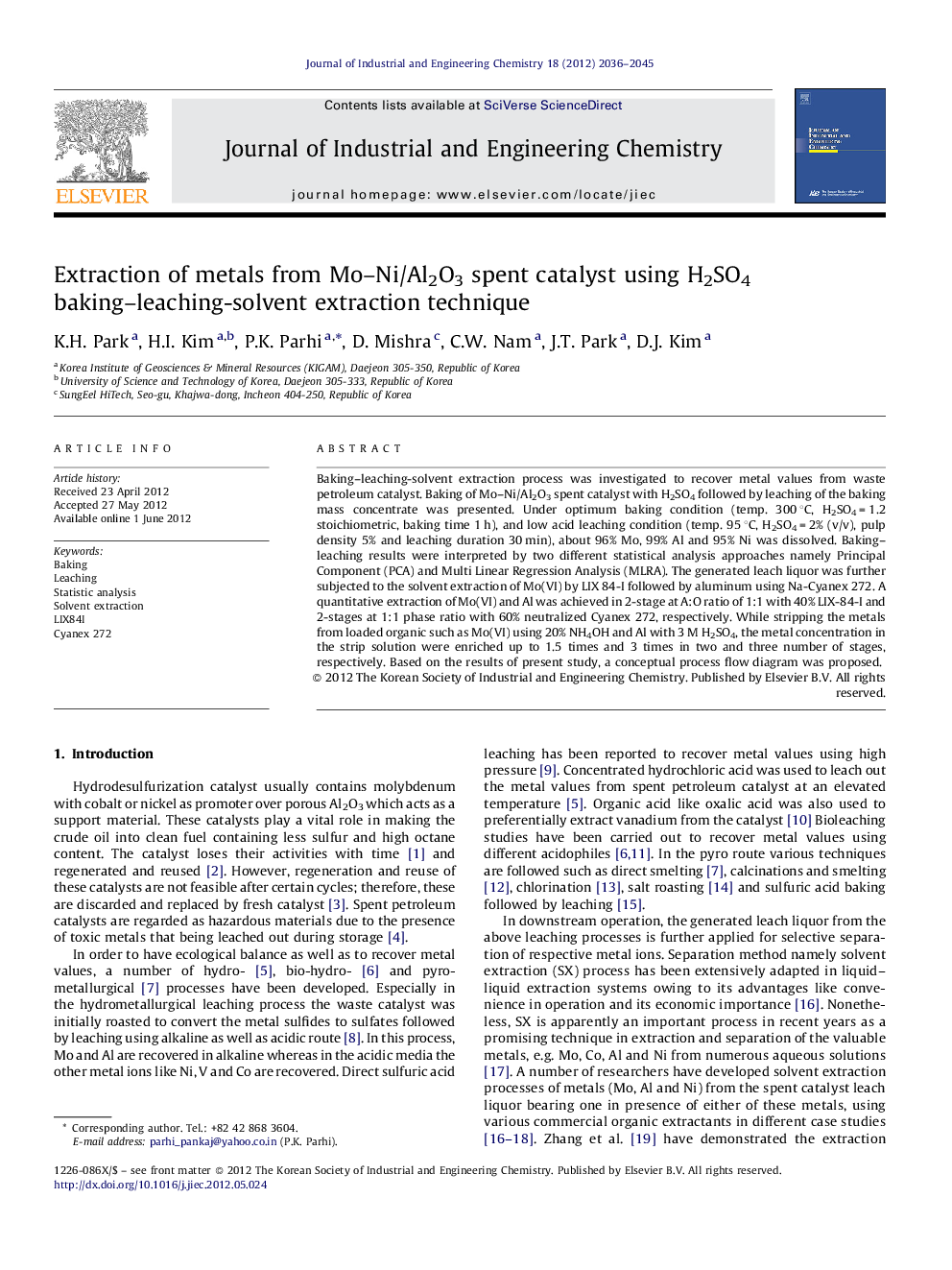| Article ID | Journal | Published Year | Pages | File Type |
|---|---|---|---|---|
| 227486 | Journal of Industrial and Engineering Chemistry | 2012 | 10 Pages |
Baking–leaching-solvent extraction process was investigated to recover metal values from waste petroleum catalyst. Baking of Mo–Ni/Al2O3 spent catalyst with H2SO4 followed by leaching of the baking mass concentrate was presented. Under optimum baking condition (temp. 300 °C, H2SO4 = 1.2 stoichiometric, baking time 1 h), and low acid leaching condition (temp. 95 °C, H2SO4 = 2% (v/v), pulp density 5% and leaching duration 30 min), about 96% Mo, 99% Al and 95% Ni was dissolved. Baking–leaching results were interpreted by two different statistical analysis approaches namely Principal Component (PCA) and Multi Linear Regression Analysis (MLRA). The generated leach liquor was further subjected to the solvent extraction of Mo(VI) by LIX 84-I followed by aluminum using Na-Cyanex 272. A quantitative extraction of Mo(VI) and Al was achieved in 2-stage at A:O ratio of 1:1 with 40% LIX-84-I and 2-stages at 1:1 phase ratio with 60% neutralized Cyanex 272, respectively. While stripping the metals from loaded organic such as Mo(VI) using 20% NH4OH and Al with 3 M H2SO4, the metal concentration in the strip solution were enriched up to 1.5 times and 3 times in two and three number of stages, respectively. Based on the results of present study, a conceptual process flow diagram was proposed.
